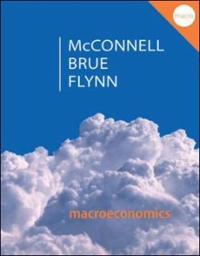Question
A perfectly price-discriminating, profit-maximizing monopolist is enjoying economic profits. (a) Graph its marginal cost (MC), average total cost (ATC), marginal revenue (MR), and demand curves
A perfectly price-discriminating, profit-maximizing monopolist is enjoying economic profits.
(a) Graph its marginal cost (MC), average total cost (ATC), marginal revenue (MR), and demand curves (D), labeling all.
(b) Label its profit-maximizing quantity (QM).
(c) What would happen to the firm's total revenue if it produced more than the profit-maximizing quantity? Explain.
(d) A local ordinance is passed that prohibits price discrimination, but the firm is still earning economic profits. Graph and label the new marginal revenue (MR2). Label its new profit-maximizing price (PM2) and quantity of production (QM2).
(e) Shade the entire area of deadweight loss.
(f) Will the change in part (d) cause the monopoly to become more or less allocatively efficient? Explain.
(g) The demand curve intersects the y-axis at $80. PM2 is $20, and QM2 is 200 units. Calculate the area of gained consumer surplus.
(h) The government offers a subsidy of $5 per unit that increases the profit-maximizing quantity to 200 units. What will the total cost of the subsidy be to the government?
Step by Step Solution
There are 3 Steps involved in it
Step: 1

Get Instant Access to Expert-Tailored Solutions
See step-by-step solutions with expert insights and AI powered tools for academic success
Step: 2

Step: 3

Ace Your Homework with AI
Get the answers you need in no time with our AI-driven, step-by-step assistance
Get Started


